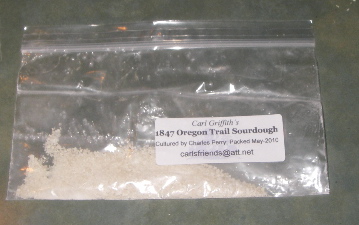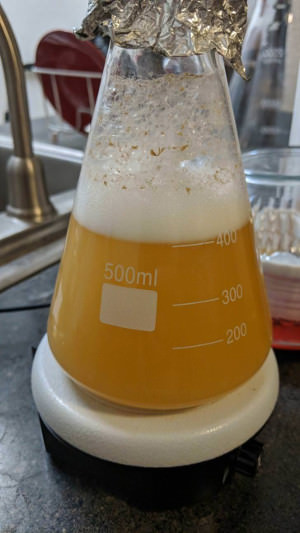Since this thread came out I was doing some research into sourdough starters a few months back to make some bread, and found out that folks who are into it dry and share these cultures all the time. In fact there's a pretty famous free starter that's been passed around from an 1847 strain called Carl Griffith's 1847 Sourdough Starter. It's still being passed on years after carl's death by friends who grow it, dry it and send it out for an SASE. You can get
it here.
The thing that surprised be when I got it is.....That it is dry...
This is what it looks like when it arrives.
One the website it says this about the Dried Starter.
This is how Carl said he used to dry his starter. I swear last year when I was reading about this starter I came upon info about how his replacements were drying it differently and in a way that was more "sanitary" if I find it I'll post it.
But I guess drying sourdough yeast is quite common.....
This is a link to drying sourdough starters.
Another link on it.
It may not work for a "clean" yeast culture BUT I'm wondering if folks doing wild brews could utilize these methods for their wild strains? At least it would be cool to trade different wild yeast strains back and forth for brewers.
And if there's NOT a way to make it more sterile/sanitary...and maybe there is a way it can be done. I was surprised it was so common amongst bread folk.






